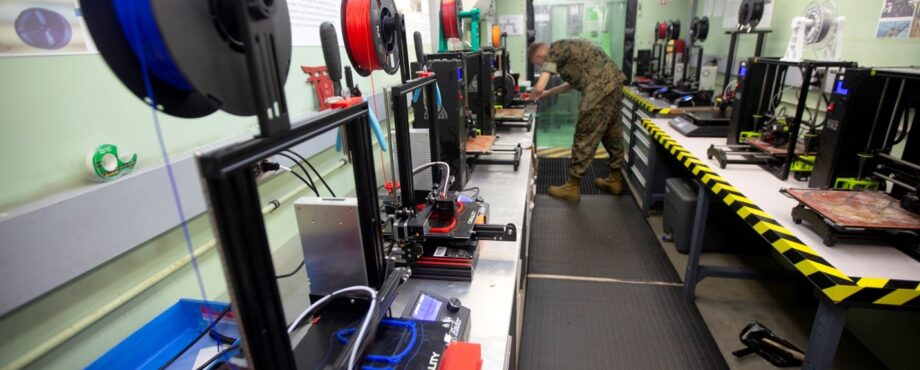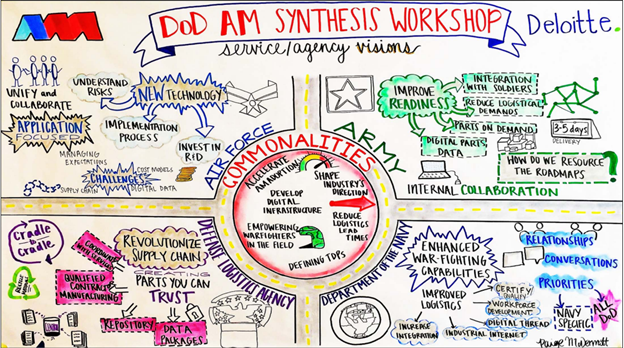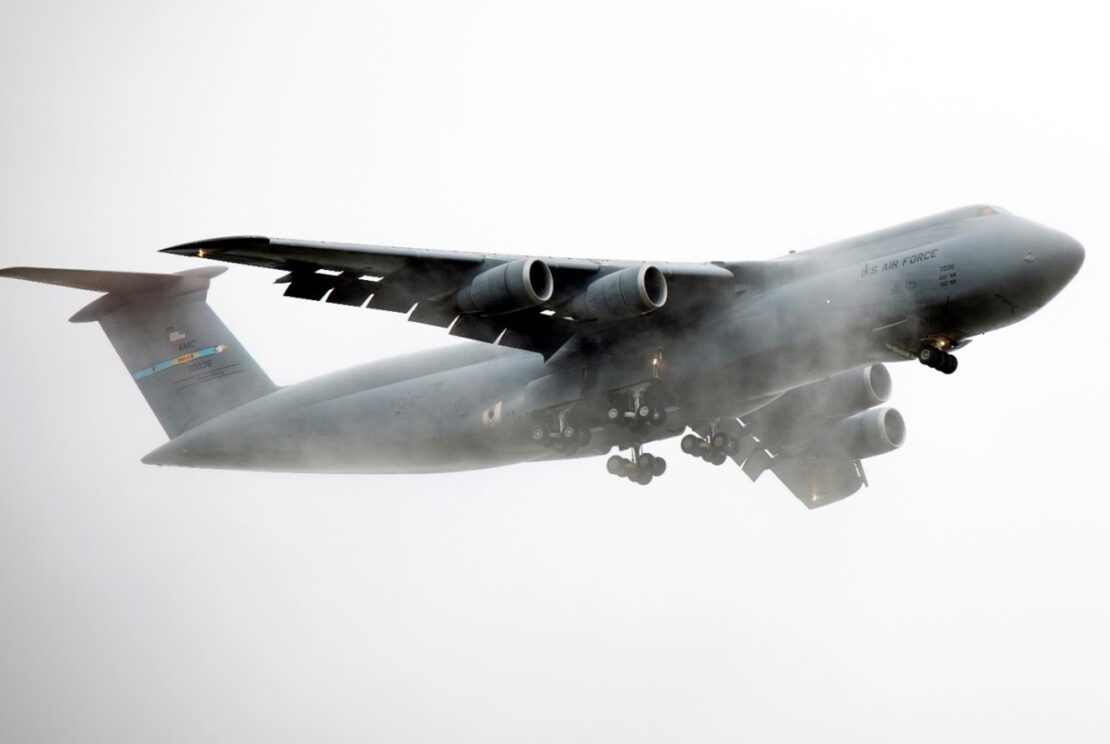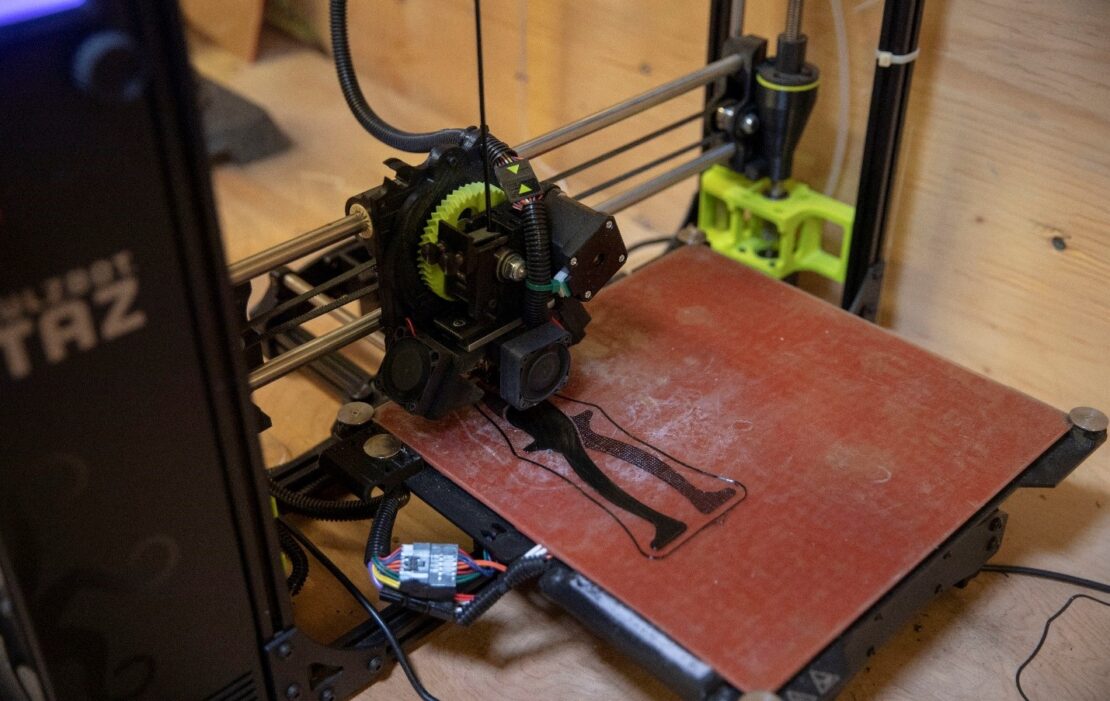Back to Blog
Additive Manufacturing in the DOD

It’s hot and late in the day. You are exhausted after working on your ship’s propulsion system for the past few hours trying to chase down the last gremlin in the air line. Eureka, after this whole time you discover that the problem was the very last hose clamp at the end of the system. No longer hurried, you let out a sigh of relief knowing the Cap’n will finally hear those magic words, “Only 20 min until we are ready to go”. You languidly saunter past what used to be the spares room which is now home to the crew lounge; fully furnished with a PlayStation, bean bag chairs, and a nacho cheese dispenser. At the very end of the hall, a large metal cabinet adorned in space-age materials lays dormant. As you approach the machine, it springs to life! Whirling and whizzing, it starts shooting down laser beams and synthesizing (as if clairvoyantly) the very hose clamp you need. Now this is what 3D printing is, right? Well maybe if your name is Captain James T. Kirk aboard the USS Enterprise.
The value-added abilities that Additive Manufacturing (AM) provides are in the beginning stages of being realized by the DoD. AM has the potential to overcome traditional time and space limitations for the warfighter and supply chain at large while being more cost effective than current support systems. AM allows servicemembers, engineers, and designers to rapidly prototype or print a needed part, on the spot and without additional support. This increased flexibility will allow the U.S. Military to become more supply chain independent, resilient, and ultimately more prepared and efficient.
While this technology continues to mature, there are some requirements that still must be developed and considered for its application within a DoD environment. For instance, the AM machines must be ruggedized to survive a transportable environment and be self-contained and self-sufficient with power, cooling, spare parts, security, and operations. The inclusion of public-private partnership is both necessary and will be imminently desirable for faster and greater success in addressing these requirements.
In this article, we will explore what the Department of Defense has published thus far. AM/3D printing has been in the hands of servicemembers since at least 2011. In 2016, the DoD held a series of nine workshops with three branches of the U.S. Military, Defense Logistics Agency (DLA), and other industry partners. The nine workshops were then condensed into the “Department of Defense Additive Manufacturing Roadmap”. Key takeaways were the advantages of DoD-wide AM utilization, synergistic vision, and the opportunity for collaboration and prioritization of resources.

Ever since 2016, the Military has continued to develop and implement AM strategies in both research prototyping and end user parts for the field. One example is the already-flying C-5M Super Galaxy, the largest aircraft in the Air Force inventory. The first C-5A Galaxy was delivered in June 1970, over 52 years ago. 3D Printing (AM) is playing a role in sustaining the fleet of 52 aircraft through the service life up through 2040, well into the 21st century. The C-5M fleet has 133 parts flying that were made from additive manufacturing, including panels and handles. “The C-5 pressure door handle is expensive, for what it is: basically a small bar of metal with a bolt in the middle of it that it pivots around,” said Matthew Harvey, C-5 structures engineer and AM lead. “A redesign of the legacy 4F41290-103A handle using additive manufacturing with an aluminum alloy generated around a nearly 95 percent cost savings for the Air Force.”

More recently in June 2021, the DoD released Instruction 5000.93 “Use of Additive Manufacturing in the DoD” which establishes an AM policy, and common goals across the Department of Defense. A deeper look into 5000.93 and implications will be the content of an upcoming article. The DoD gives some key takeaways:
- Seek to use AM to support joint force commanders and CCMD theater requirements, transform maintenance operations and supply chains, increase logistics resiliency, and improve self-sustainment and readiness for the Military Services.
- Apply AM, as appropriate, to enhance the DoD’s industrial base, including small businesses, in order to advance weapon systems capabilities and sustainment.
- Ensure that AM plans, programs, and requirements are adequately resourced.
- Educate, train, and, when appropriate, certify applicable DoD workforce members in AM.
- Ensure that DoD cyber-physical infrastructure and processes are secure and capable of supporting the use of AM across the life cycle of weapons systems.
- Develop and adopt new AM technologies where beneficial to weapon system operational capability or sustainment.
- Align AM activities across the DoD to speed up the cost-effective use of AM.
- Collaborate and share best practices across the AM community.
- Protect DoD investments in AM technology development from proliferation to near-peer and strategic competitors and carry out DoD Instruction (DoDI) 2040.02 and U.S. export control laws and regulations.
The 19-page document provides a preliminary outline for the DoD and others’ goals for the future. While exciting, we are still a long way from fully leveraging this technology. AM will play a key role in Logistics Engineering in the next decade and beyond; and at ALE, we are interested in nurturing AM in its infancy. In the next article, we plan on postulating applications of AM today and opportunities for the DoD to implement industry best practices.

References
- Jones, L. C. M. (2020). Defense Logistics Agency’s Joint Additive Manufacturing Data Exchange. ImageGallery. Retrieved May 25, 2022, from https://www.dodmantech.mil/Media/Images/igphoto/2002808846/
- https://www.wired.com/2013/05/military-3d-printers/
- https://ammo.ncms.org/documents/Resources/Other/DMC_DoD_AM_Roadmap_Briefing_30_Nov_2016_FINAL.pdf
- https://www.tinker.af.mil/News/Article-Display/Article/2332041/program-office-keeps-c-5m-super-galaxy-fleet-in-flight/
- https://www.cto.mil/wp-content/uploads/2021/01/dod-additive-manufacturing-strategy.pdf
- https://www.esd.whs.mil/Portals/54/Documents/DD/issuances/dodd/513702p.pdf?ver=2020-07-15-124712-047
- https://www.esd.whs.mil/Portals/54/Documents/DD/issuances/dodi/500093p.PDF?ver=JM7vpZGnbXAFX5uv91rXOQ%3D%3D
- https://www.af.mil/News/Photos/igphoto/2002809606/mediaid/5482314/
- https://www.arnold.af.mil/News/Article-Display/Article/2279758/additive-manufacturing-keeps-b-2-in-the-fight/
- https://www.af.mil/News/Photos/igphoto/2002864043/mediaid/5476109/
- Collins, M. C. S. 3rd C. A. (2021, June 9). https://www.navy.mil/Resources/Photo-Gallery/igphoto/2002750321/. America’s Navy. Retrieved May 25, 2022, from https://www.navy.mil/Resources/Photo-Gallery/igphoto/2002750321/






